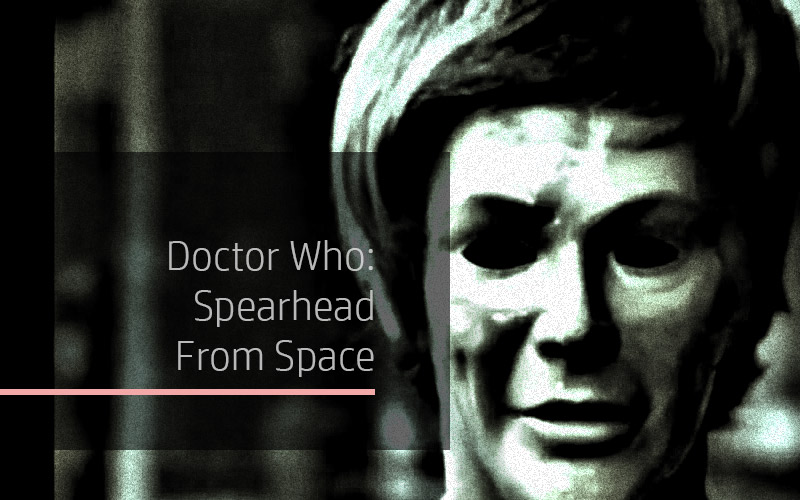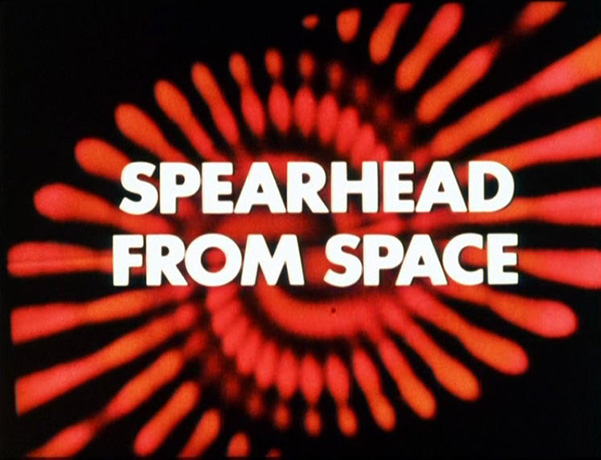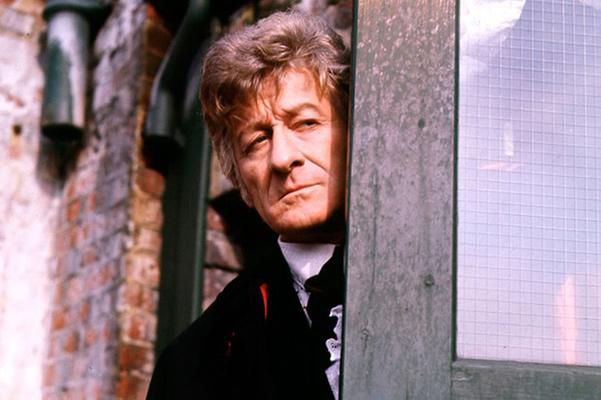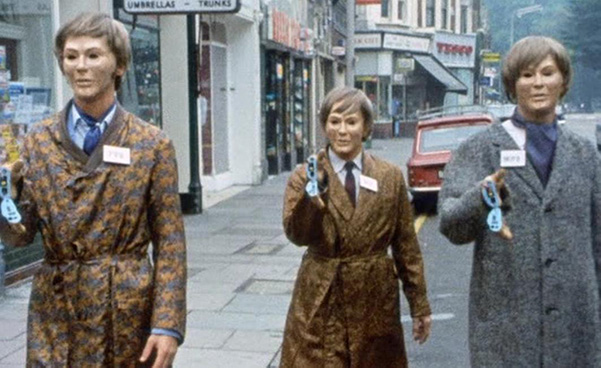
Doctor Who: Spearhead from Space
According to one online source, 861 episodes of Doctor Who have aired to date, a total running time of 17 days, 14 hours and 4 minutes. A Times article on the show’s twentieth anniversary noted sales to fifty-four countries and an international audience of 100 million. Not a bad innings for a funny little drama about a time-travelling Time Lord, the eponymous Doctor, whose adventures begin with an old-fashioned police telephone box that materialises amid an electronic swirl of noise. Halliwell’s Television Companion calls it ‘highly coloured science fiction for older children’.
Recently I found myself in a time-travelling adventure of my own, as formidable as any faced by the Doctor. In my adventure, an Earth-like planet is under attack from within, a deadly virus that slowly replaces humankind with Mr Potatohead. Inhabitants turn to social media for the answer and resort to ALL CAPS to be heard above the howl of angry typing. I find some solace in heart-warming video clips where kindly strangers rescue wild animals whose heads have become stuck in buckets. Exhausting these I turn to vintage episodes of Doctor Who.
Many adventures of the Doctor take place in a terrifying dystopian landscape. But that’s not why I watched. I never considered myself a fan; Doctor Who, like Top of the Pops, was something I soon stopped caring about once my teens got interesting. Yet I was always reassured by the fact it was there, in a regular time slot each week, even if I wasn’t watching. My earliest memories are episodes half-seen from behind the sofa, waiting for the monsters to appear. The back of the sofa remained my strongest impression of the Doctor for years.
As per the stats above, there can’t be many people yet to hear of Doctor Who. The show has long been part of the collective consciousness, with its pulsating opening credit sequence, famously flimsy sets, hammy acting and iconic monsters. But cultural zeitgeist is a bit like looking at exhibits in a museum, a distant impression obscured by self-styled experts. While I hadn’t watched an episode of Doctor Who in at least a decade, I did at least know a good place to start.

‘Spearhead from Space’ is the story that introduces Jon Pertwee as the third Doctor (after actors William Hartnell and Patrick Troughton). First broadcast in January 1970 in four parts, ‘Spearhead’ is widely considered to be one of the best arcs in the series. It was shot on film as opposed to videotape and is the first in colour, which gives it an aesthetic quality lacking in many early episodes. The story, written by series veteran Robert Holmes, rattles along apace. In it the Doctor gets to grips with his new craggy-faced incarnation, which is fun. More importantly, there’s a truly haunting nemesis: the Autons. A toy factory on an industrial estate has been commandeered by a malevolent alien race. The result is a legion of showroom dummies, mannequin foot soldiers in an impending global attack. Few can forget the moment when the mannequins twitch into motion behind a department store window and smash their way onto the high street. It’s the stuff of nightmares.

Doctor Who has a reputation for shoe-string production values. ‘Spearhead from Space’ does a half-decent job of hiding this fact, although it’s lamentable that more couldn’t have been made of a sequence set in a waxwork museum. Waxwork effigies of important figures, when called into service by the Autons, trundle off to replace their human counterparts and undermine political and social order. The sequence suggests more than it delivers, and viewers are denied the spectacle of seeing waxworks in seats of power. However, there is a peculiar resonance in watching ‘Spearhead from Space’ against the backdrop of the 2020 US Presidential election and the race for the White House. What currently passes for world leaders is an adventure lacking a cohesive plot, but one as flimsy and as frightening as the Autons.

A BBC Blu-ray release of ‘Spearhead from Space’ comes with some fascinating extras. The arrival of the new Doctor brought a new title sequence and one of the extra features is an out-take from this: a static Pertwee is seen in mid-shot with the ‘howlround’ video effect giving the illusion of time pouring into him and out of him for some twenty-odd minutes. The process is evidently one of trial and error, and altogether hypnotic. In the early 1970s effects like this would develop organically, with no clear indication of the outcome until someone decided enough was enough. The tests are also silent, lacking the haunting theme created by Delia Derbyshire and the BBC Electronics Workshop, which itself oozes invention.
David Kerekes
Like this article?
Related Posts
Comments
Copyright © Headpress


